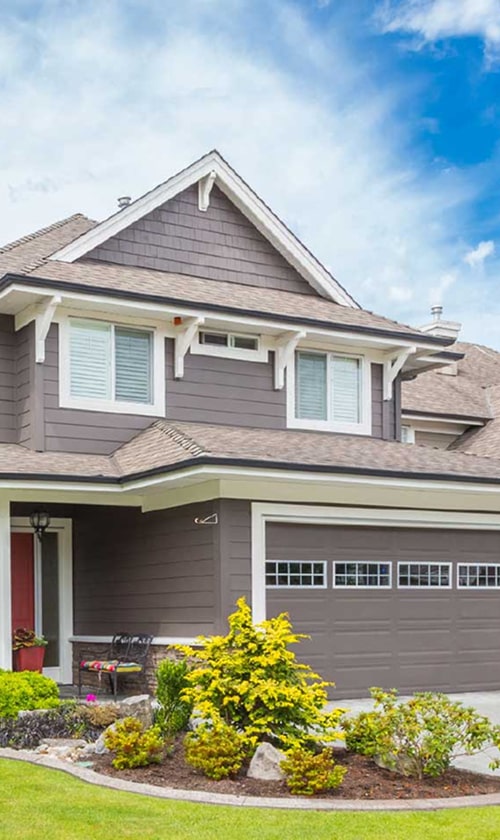Overview of Smart HVAC Systems

In today’s world, we are witnessing an increase in the use of smart technology in home and business systems, particularly for HVAC. Smart HVAC systems bring together the latest advancements in energy-efficient technologies and AI to optimize performance and comfort.
Energy-Efficient Technologies
Smart HVAC systems incorporate a variety of technologies designed to reduce energy consumption without compromising comfort. Key components include:
- Variable Speed Drives (VSDs): These adjust compressor and fan speeds, tailoring energy usage to demand.
- Smart Thermostats: Utilize AI algorithms for better temperature control, learning from user behavior to maximize efficiency.
- Energy Recovery Ventilators (ERVs): These transfer energy from outgoing stale air to fresh incoming air, reducing the load on the HVAC system.
Automated Controls:
- Sensors detect room occupancy and adjust settings accordingly.
- Zoned Systems allow for specific areas to be heated or cooled based on use, conserving energy.
Benefits of Smart HVAC Integration
Integrating smart technology into HVAC systems provides several key benefits:
- Energy Conservation: Smart HVAC systems are adept at using precise amounts of energy needed to maintain comfort, significantly lowering energy expenditure.
- Cost Savings: Increased efficiency translates into lower utility bills, offering financial benefits over time.
- Enhanced Comfort: Fine-tuned control over indoor climate creates personalized environments suited to occupants’ preferences.
- Remote Monitoring and Control: Users can adjust settings and monitor their system from any smart device.
- Maintenance Predictions: Smart HVAC systems can predict and alert us to maintenance needs before they become major issues, ensuring longevity and performance.
Incorporating smart home technology and AI into HVAC systems not only sharpens energy conservation measures but also elevates the overall living and working experience. The transition to smart HVAC systems is imperative for modern energy management and environmental responsibility.
Smart HVAC Components and Infrastructure

In this section, we discuss essential components such as smart thermostats and sensors, along with building automation systems, that form the backbone of an energy-efficient HVAC infrastructure.
Smart Thermostats and Sensors
Smart thermostats serve as the brain of HVAC optimization. They adjust heating and cooling based on real-time data and user preferences. We’ve seen substantial improvements in energy efficiency when these devices are implemented correctly. For instance, Nest and Ecobee thermostats have integrated algorithms that learn user behaviors and tweak settings to minimize energy use while maximizing comfort.
Our sensors, strategically placed throughout the facility, provide the necessary data to these smart thermostats. These sensors detect temperature, humidity, occupancy, and even air quality. They contribute detailed insights that are indispensable for maintaining an optimal environment and ensuring that the Internet of Things (IoT) infrastructure operates seamlessly.
- Occupancy sensors: Automate HVAC operation to align with room usage
- Temperature sensors: Regulate climate control for precision comfort
- Humidity sensors: Manage indoor air quality and system efficiency
Building Automation and Control Systems
Building Automation Systems (BAS) integrate all of the smart technology components to run our facilities with greater intelligence. The smart controls in these systems handle complex tasks by communicating between components, reducing the need for manual adjustments and oversight.
In our infrastructure, the BAS leverages data from IoT devices to automate processes, resulting in:
- Reduced operational costs
- Optimized energy consumption
- Enhanced occupant comfort
Effectively, smart HVAC controls create a coordinated ecosystem. By optimizing the heating, ventilation, and air conditioning components to respond to our building’s specific needs, the BAS facilitates a responsive and sustainable environment.
Energy Management and Environmental Impact

As we assess the integration of smart technology in HVAC systems, we focus predominantly on enhancing energy management and reducing environmental impact.
Reducing Carbon Footprint with HVAC
Managing the carbon footprint of heating, ventilation, and air conditioning (HVAC) systems is vital for sustainability goals. We can achieve considerable reductions in emissions by optimizing energy usage. Smart HVAC systems are designed to minimize waste and maximize efficiency, often using sensors and predictive algorithms to adjust settings in real-time, significantly cutting down on unnecessary energy expenditure. These intelligent systems help us reduce our operational carbon footprint, aligning with stringent environmental regulations.
Leveraging Renewable Energy and Smart Grids
To further promote energy efficiency, we integrate HVAC systems with renewable energy sources, such as solar panels, and connect them to smart grids. Renewable energy sources are key to reducing reliance on fossil fuels and decreasing greenhouse gas emissions. By leveraging smart grids, which are dynamically managed power supply networks, our HVAC systems can draw energy from the most sustainable sources available. This integration not only supports the use of renewable energy but also ensures that our HVAC systems operate at peak efficiency, adapting to energy availability and demand.
Implementation and Maintenance
When integrating smart technology into HVAC systems, the focus is on seamless installation and ongoing, proactive maintenance to ensure energy efficiency and cost benefits.
Installation and Retrofitting
We prioritize precision during the installation stage, ensuring that all smart HVAC components are correctly implemented. When dealing with retrofitting, we assess the existing infrastructure to integrate advanced controls without compromising the existing system’s integrity. For example:
- Assessment: We evaluate the building’s requirements and HVAC capabilities.
- Planning: Our detailed planning phase includes selecting appropriate technology for energy efficiency.
- Execution: Certified contractors carry out the installation or retrofitting according to the plan.
By focusing on these steps, we aim to maximize cost savings and avoid future disruptions.
Monitoring and Preventative Maintenance
Ongoing maintenance is crucial to the longevity and efficiency of HVAC systems. We implement robust monitoring and control systems to track performance data in real-time, which allows for:
- Early Detection: Identifying issues before they escalate.
- Maintenance Scheduling: Organizing maintenance tasks effectively.
Preventative maintenance schedules are designed to keep the system running optimally, reduce the need for reactive repairs, and prolong the lifecycle of HVAC components, leading to substantial cost savings and energy efficiency.
Regulations, Incentives, and Future Trends
As we navigate the evolving landscape of HVAC systems, understanding the regulatory environment, leveraging available incentives, and keeping a pulse on future technological trends is critical for energy efficiency and environmental sustainability.
Compliance and Incentives
In aiming for a more sustainable future, strict compliance with energy efficiency standards is necessary. Various countries have established regulations that mandate reduced greenhouse gas emissions and promote the adoption of energy-efficient technologies. For instance, the United States has the Energy Policy Act, which provides significant tax deductions for buildings meeting specific energy standards.
- Tax Incentives: Energy Policy Act (EPAct) offers up to $1.80 per square foot for meeting energy standards.
- Certification Programs: LEED and ENERGY STAR certifications encourage compliance and offer a marketable advantage.
Additionally, there are direct incentives that spur the adoption of smart technology in HVAC systems.
- Rebates and Grants: Utilities and governments often offer financial incentives to install energy-efficient systems.
- Financing Programs: Specialized programs exist that assist with upfront costs, making energy-efficient upgrades more accessible.
Incentives are not uniform globally and can vary significantly between regions, which impacts the rate at which smart technologies become standard in smart buildings.
Emerging Trends in Smart HVAC Technology
The relentless pursuit of innovation has given rise to several promising trends in the smart HVAC technology space. Our focus on climate change drives these trends, with the goal to lower greenhouse gas emissions and pave the way towards energy-efficient smart buildings.
- Integration with IoT: Smart HVAC systems are increasingly incorporating Internet of Things (IoT) connectivity for real-time monitoring and control.
- AI and Machine Learning: These technologies enable predictive maintenance, autonomous system adjustments, and personalized comfort settings.
- Eco-friendly Refrigerants: The shift towards less harmful refrigerants decreases the environmental impact of cooling systems.
By harnessing these emerging technologies, smart HVAC systems are becoming a cornerstone in the development of green buildings, affirming our commitment to an energy-conscious future.
Frequently Asked Questions
In this section, we address some pivotal inquiries about the intersection of smart technology and HVAC efficiency. Our goal is to provide clarity on how these advancements contribute to energy conservation and system optimization.
What are the benefits of integrating IoT devices with HVAC systems?
Integrating IoT (Internet of Things) devices with HVAC systems yields substantial benefits, such as real-time monitoring and control, which enhance system responsiveness and efficiency. We can achieve significant energy savings by optimizing operations according to occupancy patterns and environmental conditions.
How does machine learning contribute to the optimization of HVAC energy consumption?
Machine learning algorithms can analyze vast arrays of data from HVAC systems to identify patterns and predict future trends. By doing so, we can preemptively adjust settings for optimal energy use, effectively reducing consumption without compromising comfort.
What is the role of smart thermostats in HVAC energy efficiency?
Smart thermostats are pivotal in achieving HVAC energy efficiency. They learn from our behaviors to adjust heating and cooling cycles adeptly. This adaptation not only saves energy but also extends the lifespan of HVAC equipment through reduced wear and tear.
Can smart sensors in HVAC systems significantly reduce energy usage?
Yes, smart sensors play a critical role in curtailing energy usage. By monitoring factors such as ambient temperature, humidity, and occupancy, we can fine-tune HVAC operations to align with actual demand, thereby eliminating unnecessary energy expenditure.
What methodologies are used to assess the efficiency gains from smart HVAC technologies?
To accurately assess efficiency gains, we employ methodologies such as simulation modeling, performance benchmarking, and data analytics. These approaches allow us to quantify the impact of smart HVAC technologies on energy consumption and validate their effectiveness.
How do predictive maintenance algorithms in HVAC systems enhance energy savings?
Predictive maintenance algorithms in HVAC systems detect potential issues before they manifest into major problems. By proactively servicing components and preventing downtime, we ensure uninterrupted operation at peak efficiency, which translates to substantial energy savings.




